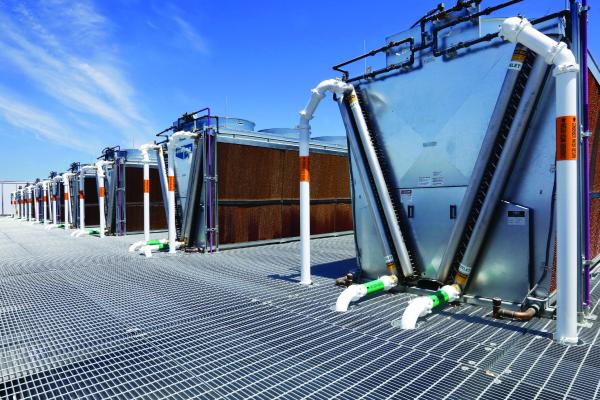Technology
This article will explore the Cooling Technologies Institute (CTI) Standard 201 (STD-201) Thermal Certification This article will explore the Cooling Technology Institute (CTI) Standard 201 (STD-201) Thermal Certification Program, share perspective from leading cooling tower manufacturers, and cover other existing and evolving CTI test codes, standards and certifications. This article will also emphasize the investment and bandwidth contributed to CTI by cooling tower manufacturers for the benefit of the industry and its end users.
In Spring 2024, Chiller & Cooling Best Practices Magazine interviewed Chuck Honeycutt and Brad Davis from Hoffman & Hoffman to discuss best practices in chiller and cooling tower sales and system design. This article will explore how the company has expanded into new areas during its 75-year history. It will also explore a large cooling tower installation at a Colorado biotech.
[ Read Full Story ]
Using a combination of predictive analysis and historical information helps companies make sound decisions relating to CUP operations. Ever-changing loads, weather and utility prices combine with hundreds of components that all impact energy efficiency. While previous strategies focused on individualized equipment efficiency and automation, CUP optimization considers the complete system.
[ Read Full Story ]
The initial reason the modular concept took hold was a frequent lack of space when it came time to replace a large chiller. Often, these chillers were installed in a confined mechanical room in the basement at the beginning of construction, and the building was then built around it. There was barely enough room to get people to the chiller for maintenance, let alone replacing the chiller itself.
[ Read Full Story ]
Danfoss Turbocor held a grand opening of its new 145,000-square-foot production facility in Tallahassee, Florida, on May 29, 2024. The $62 million investment will double the manufacturing capacity for Turbocor oil-free centrifugal, magnetic-bearing, variable-speed compressors, with the ability to expand capacity even further. This report will recap the celebration and plant tour while sharing perspective from the attendees and host.
[ Read Full Story ]
This article explores the distinction between standard system controls and holistic controls for highly efficient process cooling systems. Examples of high performance controls features and implementations are provided, and screening questions are listed for initial investigation of existing system and potential new systems.
[ Read Full Story ]
The 2024 Cooling Technology Institute (CTI) Annual Conference for manufacturers, owner-operators, and suppliers of heat rejection equipment (i.e., cooling towers, adiabatic coolers and dry coolers) was held Feb. 4 – 8 at the Westin Galleria in Houston, TX. This article will share some updates to CTI standards and acceptance test codes, synopsize the event’s educational curriculum, share perspective, and highlight products and services offered by a sampling of firms at the event’s trade show.
[ Read Full Story ]
A total of 1,875 exhibitors spread across 527,520 square feet, and 120 free educational sessions drew 48,034 total attendees. Driven by decarbonization and green transition megatrends, this event highlighted the global refrigerant transition; adoption of heat pumps; integration of building automation systems and AI; and optimization of the energy/water nexus in applied equipment. This article recaps the response and innovation from manufacturers of chillers, cooling towers and related equipment.
[ Read Full Story ]
Back in the 1980’s, when most female high school students may have been dreaming of becoming a teacher, a nurse or other more traditional ‘female’ roles, Angela Sherman had her heart set on becoming a sales engineer and running her own business.
[ Read Full Story ]
The AIM (American Innovation and Manufacturing) Act was finalized by the US government at the end of 2021. This legislation introduced a phase-down plan for virgin HFC gases. From now through 2036, the US will reduce the production and importation of virgin HFCs by granting relevant businesses a set number of HFC allowances (or quota), which will decrease over time.
[ Read Full Story ]
Process cooling systems are mandatory components of the production infrastructure in many plants. System efficiency is second only to operational performance (i.e. meeting the process requirements) in the design and operation of these systems, and many companies go to great lengths to attain system efficiency. Many times, unfortunately, the actual system performance is well below the hoped for efficiency target.
[ Read Full Story ]

